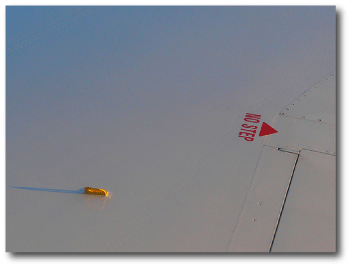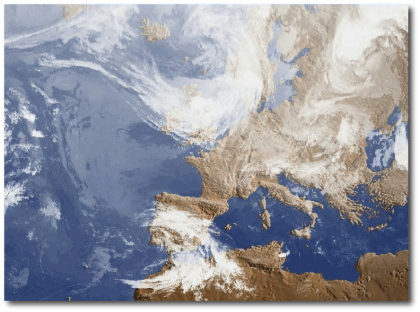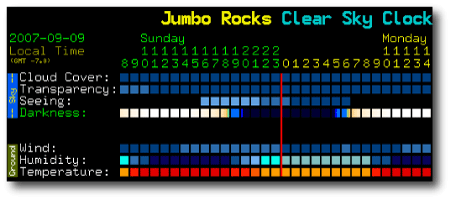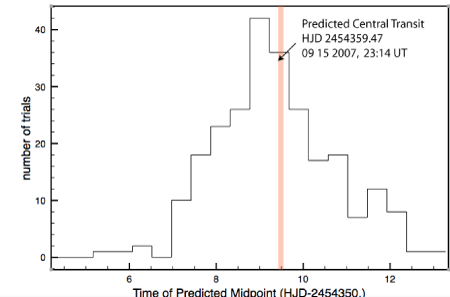
Image Source.
It’s 01:58 UT Sep. 10, and HD 17156 has moved into its transit window. Hopefully photometric transit observers across Europe have clear skies. If you’re collecting data, drop us a note on the comments page!

Sep 09, 2007 Europe Satellite Map Source.
Most of California looks pretty good for catching the latter part of the transit window once it gets dark tonight. I was up on Mt. Hamilton last night, and even though it was clear, there was a strong smell of smoke in the air. Bits of gray ash from the nearby forest fires were floating down like snow, and so they couldn’t open the dome of the 36-inch.

Image Source.
The odds of a HD 17156 transit are 10.9%, so its best not to get hopes up too high. Its always good to have the next candidate ready to go, and as luck has it, there’s another good one in the hopper.
Endl et al. have published a preprint describing the discovery of a Neptune-mass planet orbiting the nearby red dwarf star Gliese 176 (aka HD 285968). This discovery is further evidence in favor of the core-accretion prediction that Neptune planets should be common around low-mass stars whereas Jovian-mass planets should be relatively rare. Endl et al.’s new planet has an orbital period of 10.24 days, an a-priori transit probability of 3%, and an expected transit depth of 0.4%. This is a low-amplitude signal, but it is nevertheless accessible to many experienced amateur astronomers. The discovery paper makes no mention of a photometric transit search, making this planet a very attractive Transitsearch.org candidate. The star is located at RA 04:43, Dec +18:57, and the next transit window is centered on Sep. 15, 2007.


Hi Greg,
without wanting to get your attention out of HD17156 ;) , this paper at arxiv:
http://fr.arxiv.org/abs/0709.0970
presents an analysis of the data for HD11964. The most probable model they get is in rough aggreement to some solutions in the systemic database, namely one by Eric Diaz (chi2 = 1.66).
Cheers,
Luis
Hi Luis,
Cool! And congrats to Eric for characterizing the planets!
Greg
Hi greg,
any news on whether someone got lucky ?
Luis
I got a report from Ron Bissinger, who got very high quality photometry from 2454353.68 to 2454353.88. Unfortunately, it showed no indication of an event. This eliminates basically 1/2 of the window.
Hopefully someone in Europe managed to cover the first half of the window, but I have not heard anything…
Greg
Pingback: systemic - Results